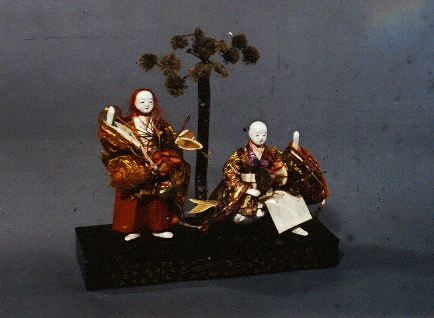Oriental Dolls and Toys
"Oriental Dolls and Toys" includes children's play toys as well as toys and dolls commemorating various facets of Asian culture. Oriental dolls, some quite old, in elaborate authentic costumes, figurines with movable parts representing Asian people and their lifestyles, and Indonesian and Japanese puppets are featured in this exhibit.
Among the unusual toys are a Chinese three-wheeled pushcart toy with a clock-work motor, a papier-mâché Chinaman pulling a rickshaw and a tiny Japanese doll with a paper turtle that moves its feet, tail and head when touched. A set of wooden figures from 1920 illustrates activities in a Chinese village, including drying tea, sawing wood and threshing rice.
Japanese dolls from Boys' and Girls' Festival Days, two holidays which have religious roots and are ritualistically celebrated with dolls, offer a unique insight into Japanese life. A rare old composition-headed Samurai warrior would have been used in an elaborate Boys' Day Festival, while a composition-headed Japanese lady in an original kimono represents a court or palace doll that would be displayed during the Girls' Day Festival.
A variety of cloth dolls are also part of the exhibition that includes a painted doll dressed in the traditional Indian costume of a printed sari and shirt, brown ankle bangles, bracelets, necklaces, earrings and nose decorations. Another highlight of the display is a selection of dolls from the Door of Hope, a mission in Shanghai, China, where Christians taught crafts to orphaned girls. These are cloth dolls with carved pear wood heads, hands and feet.








